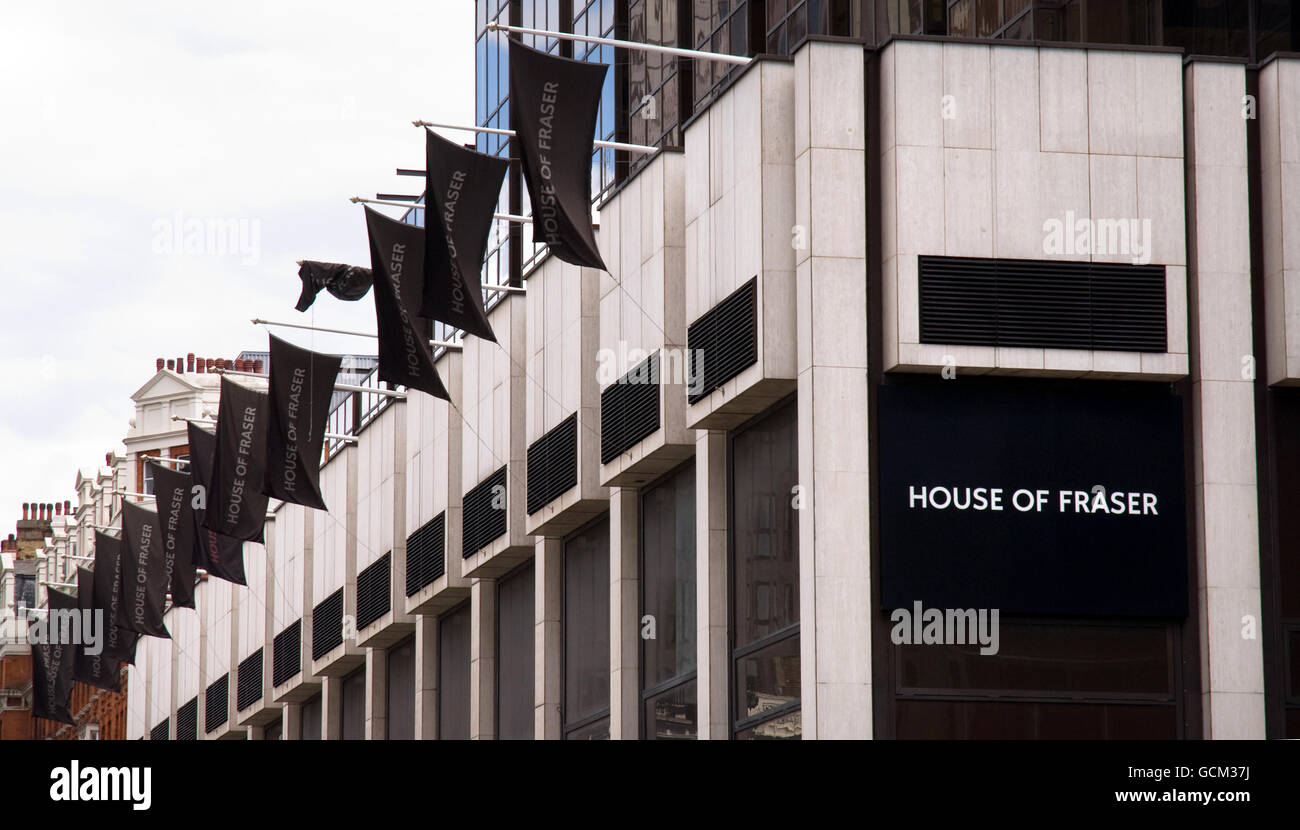History and Evolution of House of Fraser Display Cabinets

The display cabinet, a cornerstone of department store architecture, has played a pivotal role in shaping the customer experience at House of Fraser since its inception. From the early days of its founding to the modern era, these meticulously crafted structures have served as both showcases for merchandise and artistic expressions of the store’s evolving identity.
Origins and Early Implementations
The concept of display cabinets emerged in the 19th century, as department stores began to proliferate in major cities. These grand structures, often adorned with intricate carvings and ornate glass, provided a visually appealing and organized way to present a wide range of products. House of Fraser, founded in 1849 as a drapery store in Glasgow, embraced this trend early on, incorporating display cabinets into its design. The store’s early cabinets, crafted from wood and glass, were often used to showcase luxury textiles, fine china, and other high-end goods.
Evolution of Design and Materials
The design and materials used in display cabinets at House of Fraser have undergone a significant evolution over the decades. Early cabinets, often constructed from mahogany or oak, were typically adorned with intricate carvings and brass accents. These cabinets were designed to create a sense of grandeur and luxury, reflecting the store’s upscale clientele.
As the 20th century progressed, the design of display cabinets began to shift, reflecting changing trends in architecture and consumer preferences. The advent of new materials, such as steel and aluminum, allowed for the creation of more modern and streamlined designs.
- Art Deco Influence: The Art Deco movement, with its emphasis on geometric patterns and bold colors, had a significant impact on display cabinet design in the 1920s and 1930s. House of Fraser embraced this trend, incorporating Art Deco elements into its cabinets, such as stylized geometric shapes and metallic accents.
- Mid-Century Modern: In the mid-20th century, the rise of Mid-Century Modern design, characterized by its clean lines and functionalism, influenced display cabinet design. House of Fraser adopted this style, incorporating minimalist designs and the use of materials like plywood and acrylic.
- Contemporary Designs: In recent decades, display cabinets at House of Fraser have reflected contemporary trends in design, often incorporating sleek, minimalist aesthetics and the use of sustainable materials.
Role in Shaping the Customer Experience
Display cabinets have played a critical role in shaping the customer experience at House of Fraser throughout its history. These structures have served as a key element in the store’s visual merchandising strategy, creating an engaging and immersive shopping environment.
- Product Presentation: Display cabinets have always been essential for showcasing products in an attractive and organized manner. The carefully curated displays within these cabinets entice customers to browse and discover new items.
- Creating a Sense of Luxury: The use of high-quality materials and craftsmanship in display cabinets has helped to create a sense of luxury and exclusivity within House of Fraser stores. The store’s carefully designed cabinets have been a key element in its brand image.
- Enhancing the Shopping Experience: By creating visually appealing and organized displays, display cabinets have enhanced the shopping experience for customers at House of Fraser. The cabinets have helped to create a sense of discovery and excitement, encouraging customers to explore the store’s offerings.
Design and Functionality of House of Fraser Display Cabinets

House of Fraser display cabinets are more than just containers for merchandise; they are carefully crafted architectural elements that play a crucial role in shaping the brand’s identity and influencing customer perceptions. These cabinets are designed to showcase products in a visually appealing and engaging manner, enhancing the overall shopping experience.
Materials and Finishes
The materials and finishes used in House of Fraser display cabinets are selected to create a luxurious and sophisticated ambiance. The most common materials include:
- Glass: Clear or tinted glass is widely used for cabinet fronts, allowing customers to view the products clearly. Tempered glass is preferred for its strength and durability.
- Wood: High-quality wood, such as mahogany, walnut, or oak, is used for cabinet frames, shelves, and bases. The wood is often polished or stained to enhance its natural beauty and create a classic look.
- Metal: Metal accents, such as brass or chrome, are often incorporated for decorative purposes. These accents add a touch of elegance and sophistication to the cabinets.
Lighting
Lighting is a crucial element in display cabinet design, as it can dramatically impact how products are perceived. House of Fraser display cabinets typically feature a combination of lighting techniques:
- Overhead Lighting: General overhead lighting provides a consistent level of illumination throughout the store.
- Accent Lighting: Spotlights or track lighting are used to highlight specific products and create visual interest.
- LED Lighting: LED lights are becoming increasingly popular in display cabinets due to their energy efficiency and long lifespan. They also offer a wide range of color temperatures, allowing for precise control over the lighting environment.
Types of Display Cabinets
House of Fraser employs a variety of display cabinets, each designed for a specific purpose:
- Wall-Mounted Cabinets: These cabinets are typically used to showcase smaller items, such as jewelry, watches, or perfumes. They are often designed with glass shelves and doors to maximize visibility.
- Freestanding Cabinets: Freestanding cabinets are larger and can be used to display a wider range of products, including clothing, shoes, and accessories. They often feature drawers, shelves, and compartments for storage and organization.
- Showcase Cabinets: Showcase cabinets are designed to draw attention to a particular product or collection. They are often positioned in high-traffic areas and feature dramatic lighting and display techniques.
- Interactive Cabinets: Some House of Fraser display cabinets incorporate interactive elements, such as touch screens or digital displays, to enhance customer engagement and provide additional product information.
Impact on Product Presentation and Customer Engagement
The design of House of Fraser display cabinets plays a significant role in shaping customer perceptions and influencing purchasing decisions.
- Visual Appeal: The use of high-quality materials, finishes, and lighting creates a visually appealing and inviting environment, encouraging customers to browse and explore the products.
- Product Organization: The design of the cabinets ensures that products are displayed in a logical and organized manner, making it easy for customers to find what they are looking for.
- Enhanced Product Presentation: The use of lighting, mirrors, and other display techniques highlights the key features and details of the products, making them more appealing to customers.
- Customer Engagement: Interactive elements, such as touch screens or digital displays, provide customers with additional information about the products, enhancing their shopping experience and encouraging them to make a purchase.
Impact of House of Fraser Display Cabinets on Brand Identity and Customer Experience

House of Fraser’s display cabinets are not mere showcases; they are carefully crafted elements that contribute significantly to the brand’s identity and the customer experience. These cabinets, through their design, functionality, and strategic placement, communicate the brand’s values and influence customer perceptions, ultimately impacting purchasing decisions.
Contribution to Brand Identity and Image, House of fraser display cabinets
House of Fraser’s display cabinets play a crucial role in shaping the brand’s identity and image. The cabinets are meticulously designed to reflect the brand’s heritage, values, and target audience. Their elegant and sophisticated aesthetic, often featuring high-quality materials like glass and wood, reinforces the brand’s image of luxury and refinement. The curated displays within these cabinets showcase the brand’s commitment to quality, craftsmanship, and exclusivity, further strengthening the brand’s position as a purveyor of premium goods.
Creation of a Desirable and Engaging Customer Experience
Display cabinets are not simply functional; they are designed to create a desirable and engaging customer experience. The strategic placement of these cabinets, often in high-traffic areas, draws customers in and encourages exploration. The carefully curated displays within the cabinets offer a visual feast, showcasing the brand’s products in their best light. This creates a sense of excitement and anticipation, inviting customers to interact with the products and learn more about them.
Influence on Customer Purchasing Decisions and Brand Perception
Display cabinets have a direct influence on customer purchasing decisions and brand perception. The way products are presented in these cabinets can significantly impact a customer’s perception of value and desirability. A well-designed and curated display can make a product appear more luxurious, exclusive, and desirable, increasing its appeal to potential buyers. The overall experience of interacting with these cabinets, from the aesthetics to the product information provided, can shape a customer’s perception of the brand as a whole, influencing their loyalty and willingness to make repeat purchases.
House of Fraser display cabinets, known for their elegance and functionality, often feature a sophisticated color palette. A popular choice, especially for those seeking a modern and understated aesthetic, is coventry grey kitchen cabinets. This hue, with its cool undertones, mirrors the restrained sophistication often found in House of Fraser’s displays, creating a sense of timeless refinement.
House of Fraser’s display cabinets are renowned for their elegance and functionality, showcasing merchandise in a captivating manner. While these cabinets offer a premium aesthetic, those seeking a more customizable and budget-friendly option might consider exploring the realm of IKEA custom cabinet sizes , which allows for tailored solutions to fit specific display needs.
Whether it’s for a retail space or a home office, IKEA’s offerings provide a flexible and cost-effective alternative to traditional display cabinets.